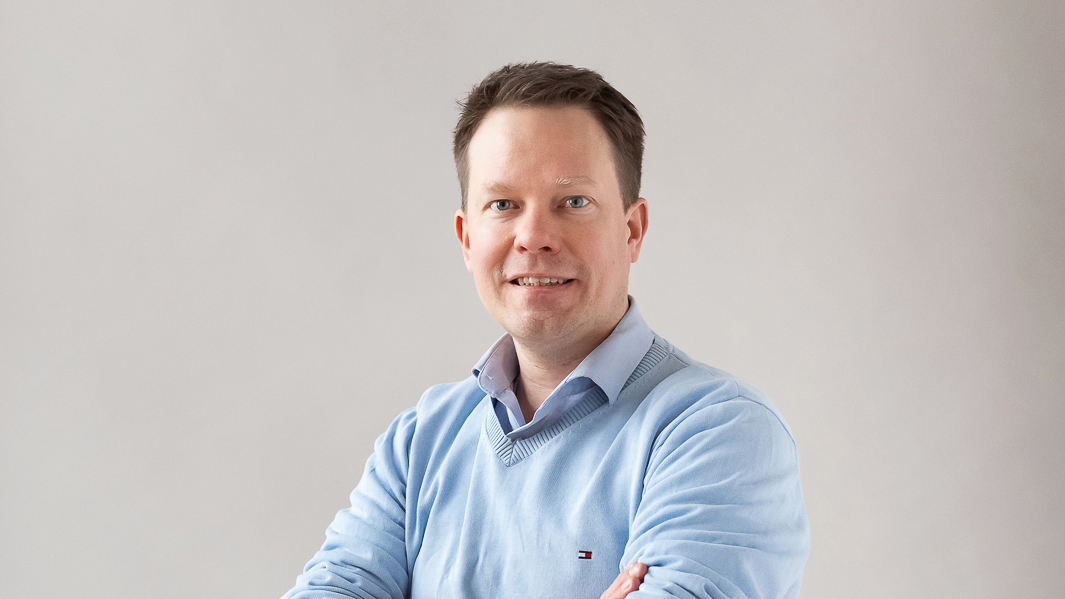The complexity of patent portfolio management, autonomous telecommunications networks and mining equipment, producing protein from air, or the regulatory framework of wealth management. AI consultants rarely have deep prior understanding of these topics – and that's precisely what makes AI strategy work so fascinating.

Mika Aho shares why AI strategy work is a journey of continuous learning and how concrete projects across industries – from biotech to mining – push experts to tackle new challenges.
Who are you and what do you do?
I’m Mika Aho, the CEO and co-founder of Data Design. My role lives up to the title: I'm deeply involved in delivering client projects while steering the entire company toward our shared goals.
Why do you talk about being outside the comfort zone?
AI strategy work inherently requires you to constantly dive into industries and business processes where you sometimes have little to no prior experience. At the same time, you need to stay current with technological developments.
I've been involved in over 30 projects, and each one has been a learning journey – even when revisiting familiar industries.
Can you give concrete examples?
Absolutely. Let me share a few recent projects.
I just returned from New Zealand, where we're teaming up with autonomous network experts to build self-optimizing telecom. The concept involves e.g. networks that self-optimize performance and predict failures. Although I started my career at Nokia Networks, the operational challenges of telecom were once again a new world to master.
We created an AI strategy for Solar Foods, which literally produces protein from air. At first glance, AI might seem unnecessary in such a scientific breakthrough, but our roadmap accelerated product development, optimized operations, and supported commercialization. The project involved a broad stakeholder group from sales to test kitchen chefs, and two prototypes demonstrated the feasibility of our ideas.
Nokia's patent world with its legal nuances and portfolio strategies was completely new territory. I had to master the entire field's terminology from scratch. AI helped identify relevant patents from vast data masses and assess the portfolio's strategic value. We also trained hundreds of Nokia employees. This was before the generative AI era - today, many of those opportunities would be much easier to build.
For Sandvik's mining equipment, the AI strategy focused on machine intelligence: sensing, predictive maintenance, optimization, and safety in challenging conditions. The mechanics and operating environment were completely foreign to me.
At Mandatum, the focus was on regulation, compliance, and data protection. The challenge was finding balance between innovation and regulatory constraints.
Isn't it risky if you don't know the client's industry?
Surprisingly not, though knowledge always helps. Often clients specifically seek an outside perspective and a partner who drives the process forward with determination.
From an AI perspective, many applications are transferable across industries. Under the hood, the algorithms, data structures, and technologies are largely the same – whether we're talking about protein production, patent analysis, or network operations.
How do you succeed in an unfamiliar industry?
Generative AI and the tools built on top of it help tremendously with absorbing new subjects. I can gather and process information and build understanding faster than ever before.
We've developed a repeatable AI strategy framework that ensures a systematic process regardless of industry. It covers everything from understanding business strategy to creating portfolios and building prototypes. We've also developed a digital tool using multi-agent systems that supports the entire AI journey design.
Additionally, we always engage a broad group of stakeholders from the client organization and bring in domain experts when needed. If we don't have specialized expertise in-house, we'll find it in our network. Sometimes AI strategy work is done as part of a larger multi-vendor team that brings the missing expertise.
What have you learned from these projects?
The core of AI strategy isn't technology but business opportunities – where to invest and what capabilities to build. Deep industry knowledge isn't a prerequisite for success, as an outside perspective often brings fresh ideas.
The power of prototypes is undeniable. They transform abstract strategies into concrete reality and secure organizational commitment. Also, targeted workshops for different groups work better than massive all-hands sessions.
What's the best part of these projects?
That moment when strategies are complete and prototypes come to life. You see the spark in the client's eyes when they understand what AI can mean for their specific business. Concrete results always inspire.
And of course, the learning itself. Every project teaches something new – whether it's protein fermentation, strategic patent evaluation, mining equipment operations, building autonomous telecom networks, or navigating regulated environments.
AI strategy work is an eternal learning journey, and that's exactly what makes it so rewarding.









.png)
.svg)

.svg)


.png)
.png)



.svg)